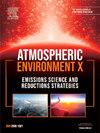Physicochemical characterization of welding and grinding fine particulates at a machinery plant: A comprehensive case study of workers’ health risk assessment
IF 3.4
Q2 ENVIRONMENTAL SCIENCES
引用次数: 0
Abstract
Electric welding is a well-developed technology and an indispensable process in today's metal processing-related manufacturing industries. However, high-temperature operation could easily expose welding personnel to metal fume containing particle matters (PM) with aerodynamic diameters (dp) ranging from sub-microns to microns. This investigation focused on a high-pressure vessel manufacturing factory in southern Taiwan, and workers in the same indoor factory building were divided into five similar exposure groups (SEGs), including design, layout/assembling, arc welding, grinding and pickling/painting, to implement personal sampling. According to the monitoring data on-site, high concentrations of PM are mainly found in the areas within 0.5 m of welding operations; the fume produced from ilmenite electrodes has the highest concentration of PM, and followed by those using high-fiber electrodes and high-tensile steel electrodes. Especially when welding with ilmenite electrodes at the current of 150 A, the concentrations of PM2.5 and PM10 reached the highest 1716 and 3024 μg/m3, respectively. The SEG of welding, who manually welded carbon steel and stainless steel, even exposed to submicron particles with dp = 151–170 nm. Metal analysis of PM using inductively coupled plasma optical emission spectroscopy (ICP-OES) found that the cancer risk of cadmium (Cd) and chromium (Cr(VI)) in the SEG of pickling and painting was significantly the highest among all SEGs; the non-cancer risk (hazard index) of manganese (Mn) was high among all SEGs.
机械工厂焊接和研磨细颗粒的理化特征:工人健康风险评估的综合案例研究
电焊是当今金属加工相关制造业中一项发达的技术和不可缺少的工艺。然而,高温操作很容易使焊接人员暴露在含有空气动力学直径(dp)从亚微米到微米的颗粒物质(PM)的金属烟雾中。本研究以台湾南部的一家高压容器制造工厂为研究对象,将同一室内厂房内的工人分为5个相似的暴露组(seg),包括设计组、布置组/装配组、弧焊组、研磨组和酸洗组/喷漆组,进行个人抽样。现场监测数据显示,高浓度PM主要集中在焊接作业0.5 m范围内;钛铁矿电极产生的烟气中PM浓度最高,其次是高纤维电极和高强度钢电极。尤其当钛铁矿电极在150a电流下焊接时,PM2.5和PM10浓度最高,分别达到1716和3024 μg/m3。焊接的SEG,谁手工焊接碳钢和不锈钢,甚至暴露在亚微米颗粒dp = 151-170 nm。利用电感耦合等离子体发射光谱(ICP-OES)对PM进行金属分析发现,酸洗和涂装工序中镉(Cd)和铬(Cr(VI))的致癌风险最高;在所有SEGs中,锰(Mn)的非癌风险(危害指数)较高。
本文章由计算机程序翻译,如有差异,请以英文原文为准。
求助全文
约1分钟内获得全文
求助全文
来源期刊

Atmospheric Environment: X
Environmental Science-Environmental Science (all)
CiteScore
8.00
自引率
0.00%
发文量
47
审稿时长
12 weeks
 求助内容:
求助内容: 应助结果提醒方式:
应助结果提醒方式:


